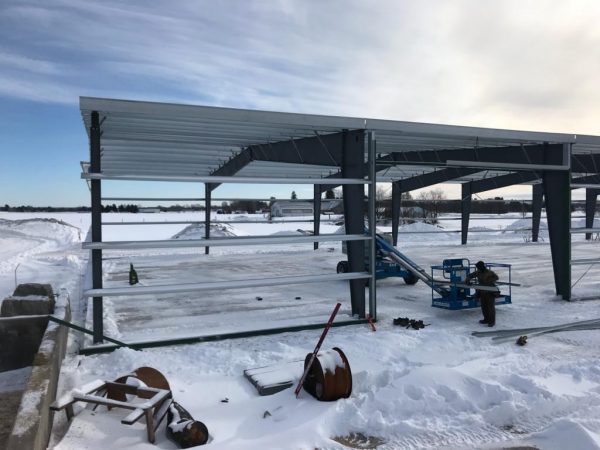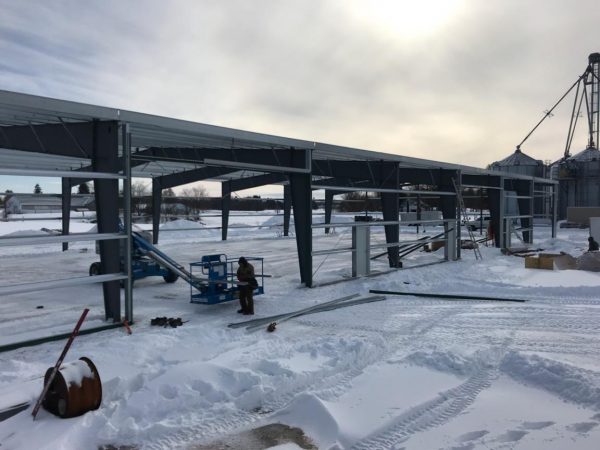4 Extra Costs for Winter Steel Building Projects
Erecting steel buildings in the Winter can add to your overall project cost. Learn how frozen ground, concrete/masonry work, equipment, and weather during the coldest months of the year can impact your overall project cost in the list below, created by Jason Lerman, Senior Project Manager at Steelsmith.

1. Frozen Ground: Longer Construction Timeline and a Dirty Jobsite
Frozen ground is simply harder to dig into. As long as you aren’t working in Alaska, there is no permafrost and additional equipment isn’t needed. However, fundamentally, frozen ground is still harder to get through than unfrozen ground and takes more time.
Working with frozen ground also tends to make for a much messier job site. Once the frozen ground is unearthed, it creates big muddy clumps of ground, unlike the dry dirt you can work with in warmer months, all throughout the site. In turn, mud gets onto the columns, which are laid out before being erected, and also gets tracked onto the beams by the construction workers’ boots, who walk on the beams during the erection process. Dirty beams eventually need to be cleaned off before framing is completed, resulting in additional work.
2. Concrete and Masonry Work: Additional Steps and Precautions/ Considerations
Concrete sets up more slowly when its cold- very slowly below 50°F; below 40°F the hydration reaction stops and the concrete doesn’t gain strength. In cold temperatures, precautions must be taken to ensure that the concrete cures properly and evenly.
In cold temperatures, the concrete can be mixed with hot water to cure without freezing. In extremely cold temperatures, accelerators can be added to the concrete, which allow it to cure. Both antifreeze and heat are costly additions to ensure a proper cure of concrete in the creation of a steel building foundation.
Concrete work also needs to be covered with frost-preventing blankets during the curing process. These electrically heated blankets cover the concrete for 3-7 days while the mixture solidifies, ensuring a proper cure.
If your building requires any masonry elements, these will also require additional precautionary additives, similar to concrete.
3. Equipment Costs: Additional Fuel
Mainly in the Northern and Western United States and Canada, equipment must be kept running during extreme-frigid temperatures. This results in higher diesel fuel costs, which ultimately results in higher project costs.
4. Weather: Snowstorms
Another winter event that can increase building cost and construction time is a snowstorm. If a snowstorm occurs during any phase of the erection process, from breaking ground, to pouring the concrete foundation, to building erection, the job site and equipment must both be cleared of snow before construction work can continue.

Jason’s recommendation:
“If possible, I recommend starting erection in the Spring, Summer, or Fall. This way, you can avoid winter erection factors that can increase project cost and production time.”
Read our related article Best Time to Start Planning Your Steel Building Project for more information about planning a steel building project and why you should start planning now, no matter when you want to erect. Fill out our Free Online Quote Form to get in contact with one of our project managers and receive a customized quote for your project today.
